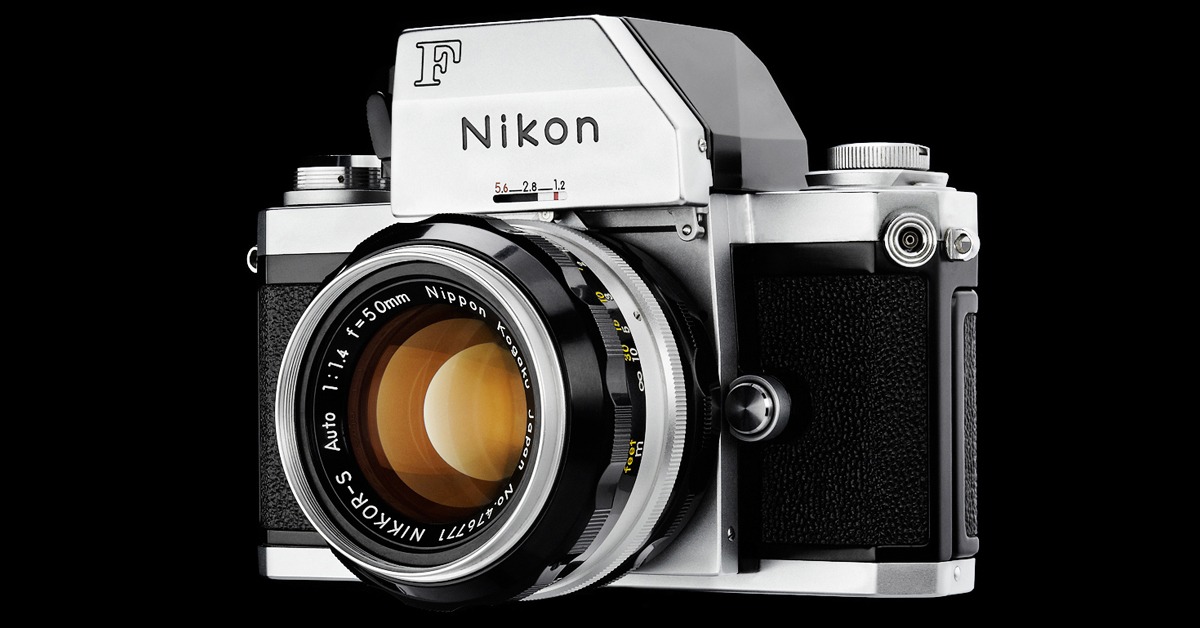The Illustrious F is Born
The Nikon F camera was introduced in April 1959, and was Nikon’s first SLR camera. I’ll skip over the actual “first”, which was produced in 1861 by Thomas Sutton. The first production SLR in 35mm format SLR was the Ihagee Kine Exakta, produced in 1936 in Germany, which was fundamentally a scaled-down Vest-Pocket Exakta. In Japan, there were a few produced all within months of each other. (I won’t get into the Russians, Italians and French,…a bit too esoteric) The Asahiflex IIB of 1954 was the first Japanese SLR with an instant-return mirror. So, you can see, Nikon took their time developing a “professional” camera. While much more advanced than the others, it was almost 1960. However, it was one of the best of it’s day. Although many of the concepts had already been introduced elsewhere, it was revolutionary in that it was the first to combine them all into one camera. It was produced until October 1973 and was replaced by the Nikon F2. Aspects of it’s design remain in all of Nikon’s subsequent SLR cameras, through the current Nikon F6 film and even digital cameras. (Nikon D5) Keeping the Nikon F-mount for lenses to this day is actually quite amazing. The “F” in Nikon F was selected from the term “re-f-lex”, since the pronunciation of the first letter “R” is not available in many Asian languages. (not “film” as many think) That the single digit tradition was carried all the way through their top line of Nikon cameras until the introduction of the Nikon D1 cameras many decades later. (yeah, “D” stands for digital)
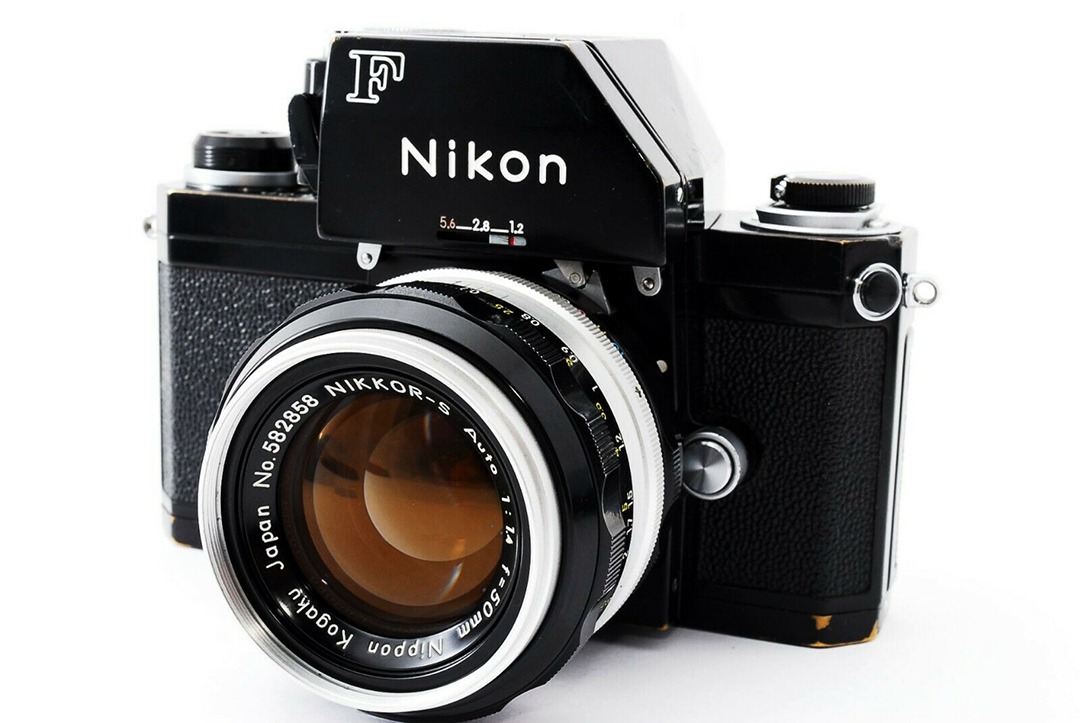
History
The Nikon F was the first 35mm SLR system to be widely adopted by professional photographers, especially photojournalists covering the Vietnam War, as well as for use by NASA astronauts. It was originally priced at US $186 with 50mm f/2 lens, which would be about $1650 in today’s dollars. In November 1963 the US price was $233 for the body with a standard prism plus $90 for a 50mm f/2 lens or $155 for a 50mm f/1.4. So, you can see the price was skyrocketing once the word got out. A combination of design elements made the Nikon F successful. It had interchangeable prisms and focusing screens, a depth-of-field preview button, a mirror lock-up capability, a large bayonet mount and a large lens release button, a single-stroke ratcheted film advance lever, a titanium-foil focal plane shutter, various types of flash synchronization, a rapid rewind lever plus a fully removable back. It was well-made, (actually took bullets in Vietnam), durable, and adhered closely to the successful design scheme of the previous Nikon rangefinder cameras. And the camera was the first to use the F-mount bayonet lens mount system, which is still used as of 2020!
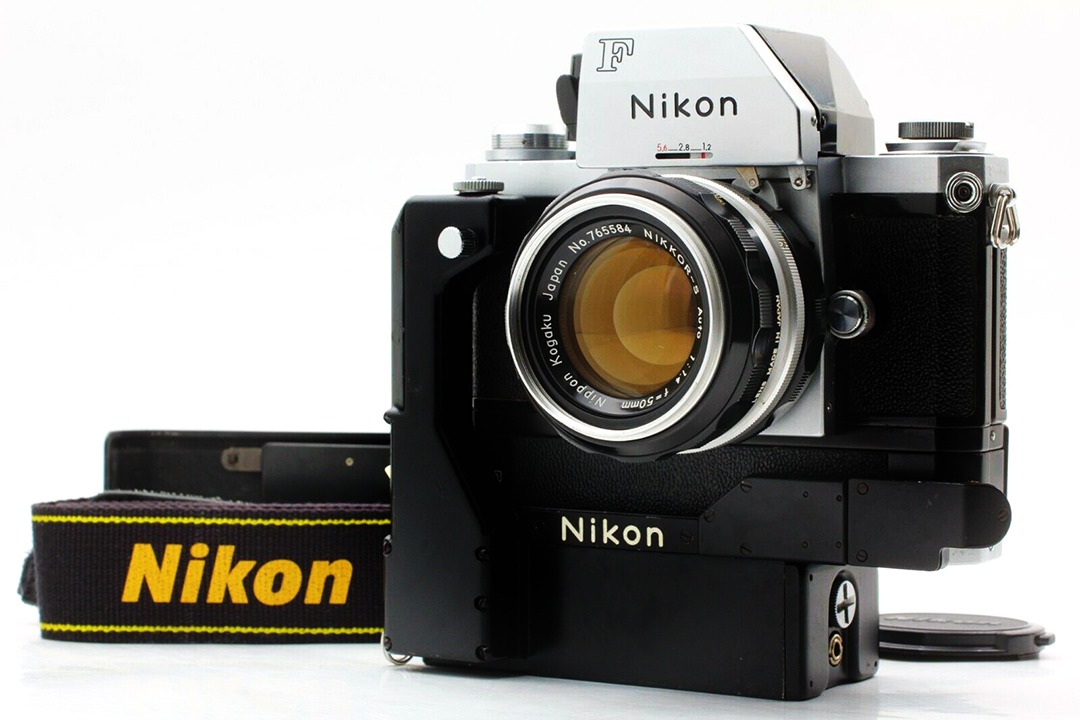
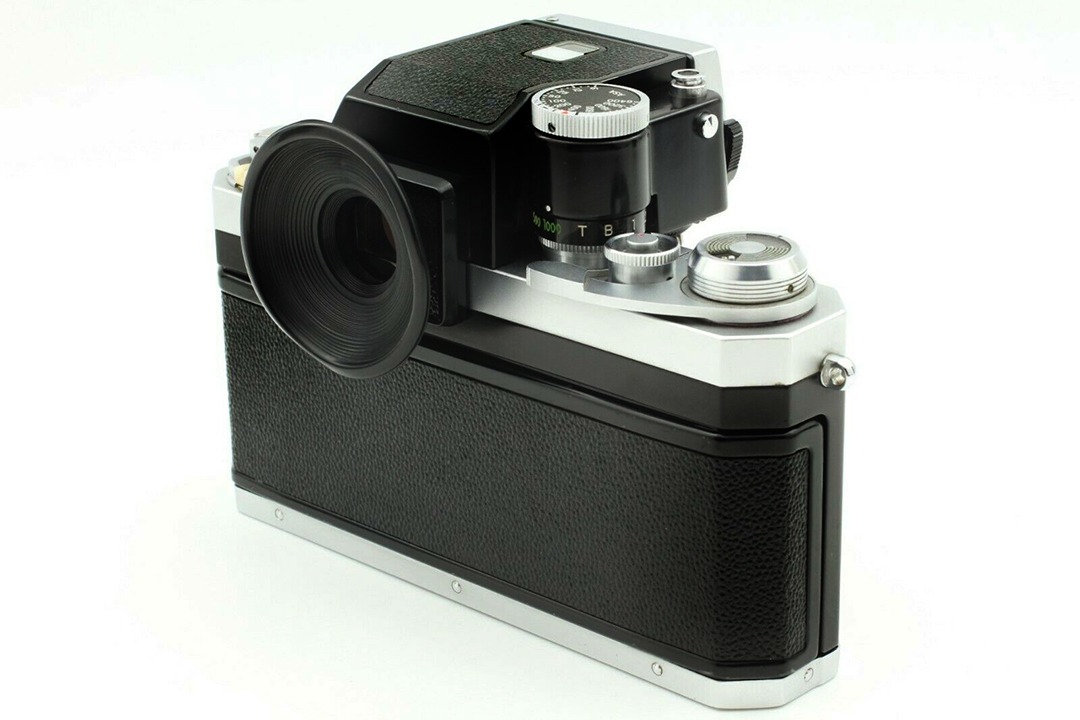
Into Space
The Apollo 15 (NASA) Nikon F with an FTn Photomic prism and F36 motor drive, was the first 35 mm SLR in lunar orbit. Further expanding it’s almost magical legendary status. The F was a true modular system camera, with various assemblies such as viewfinders, focusing screens, and motor drives for 36-exposure and 250-exposure film cassettes. It wasn’t long before third parties started manufacturing other film backs, such as those Rube Golberg contraptions,… “Speed Magny” film backs—one using Polaroid 100 (later 600) type pack films, and another designed for 4×5 film accessories, including Polaroid’s own 4×5 instant film back. Each of these assemblies could be fitted and removed, allowing the camera to adapt to almost any task. The F36 motor drive, one of the first popular motor drives for SLR cameras, was capable of firing up to 4 frames per second, (with the mirror locked up), or 3 frames per second with full reflex viewing maintained. The Nikon F had a wide range of lenses, covering 21 mm to 1000 mm focal lengths by 1962. (it’s biggest advantage on rangefinder cameras) Nikon was among the first companies to manufacture “catadioptric” system lens designs, combining mirrors and lenses to enable compact lenses with extremely long focal lengths. (usually those short 1000mm+ lenses)
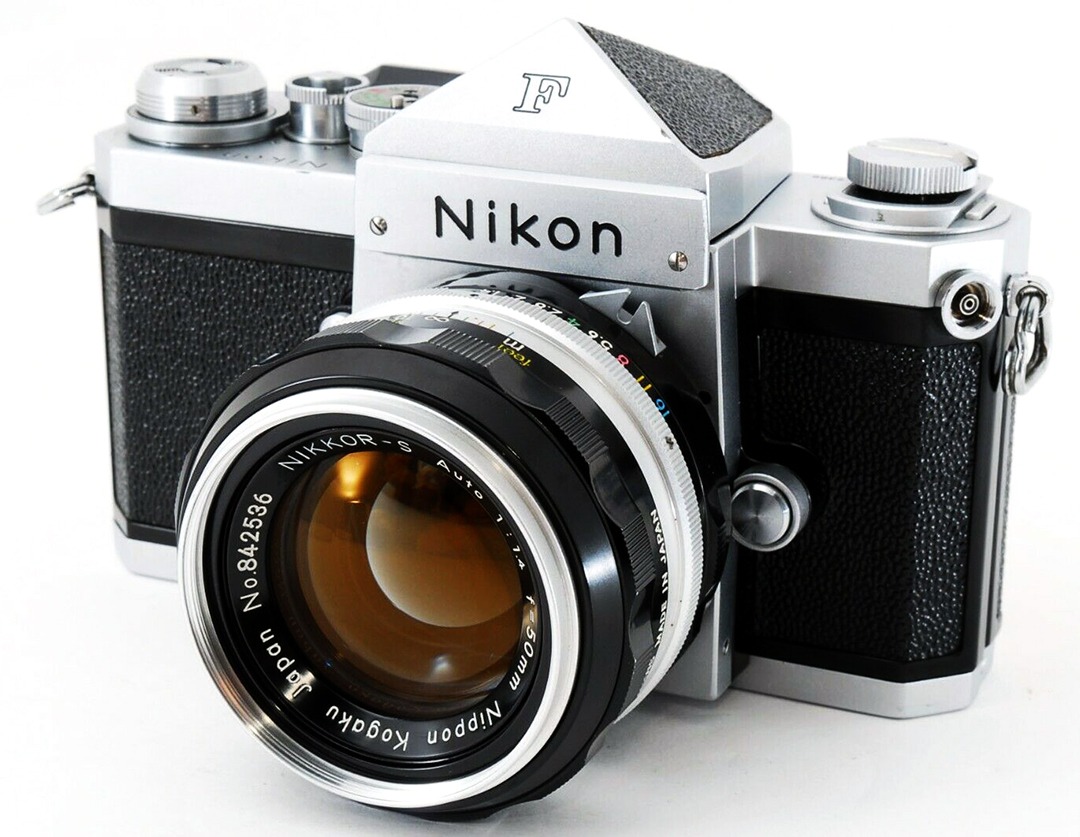
A Real Revolution
While Leica never lost it’s hardcore following, the Nikon F revolutionized the photographic market, especially for professionals. The F had a reputation for being extremely resilient to damage or mechanical failure, becoming known as “the hockey puck.” Now, this is interesting, and why Nikon started using the word “Nikkor”. In some markets, the camera was marketed as a “Nikkor F”, (not just the lenses), due to trademark conflicts. In Germany, “Nikon” was seen as too similar to the Zeiss Ikon camera line. Nikkor F cameras have become collector’s items. They would actually be too valuable for use nowadays.
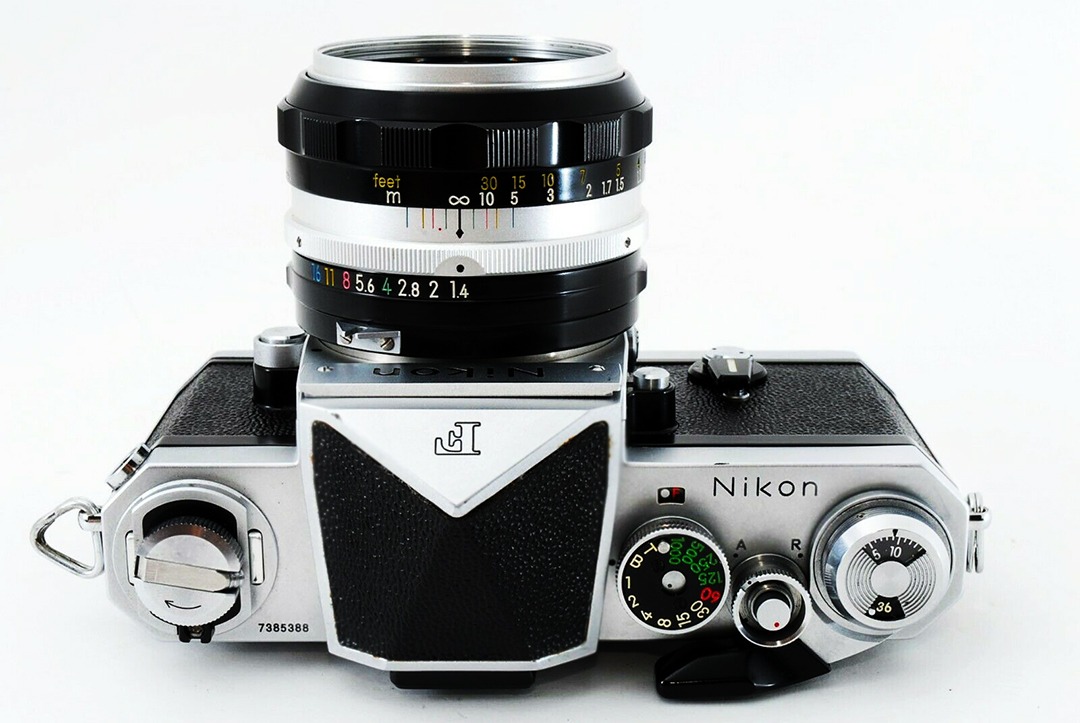
The first Nikon F Photomic viewfinder, delivered since 1962, had an independent photocell. (we were entering the electronics era 🙁) Then Nikon introduced the Photomic T, (superseded by the Photomic Tn), which featured through-the-lens (TTL) metering. While the 1963 Topcon RE Super was actually the first camera with TTL,…what’s a month or so. The final metering prism for the Nikon F, the Photomic FTn, wasn’t introduced until 1968, and it provided 60% center-weighted TTL, which became the standard metering pattern for Nikon cameras for decades afterwards. (and lots of others) Additional viewfinders included a waist-level viewer, a 6 power magnifying finder, and an “action finder” with a larger viewable area through which one could see the entire frame while wearing goggles and/or a helmet!
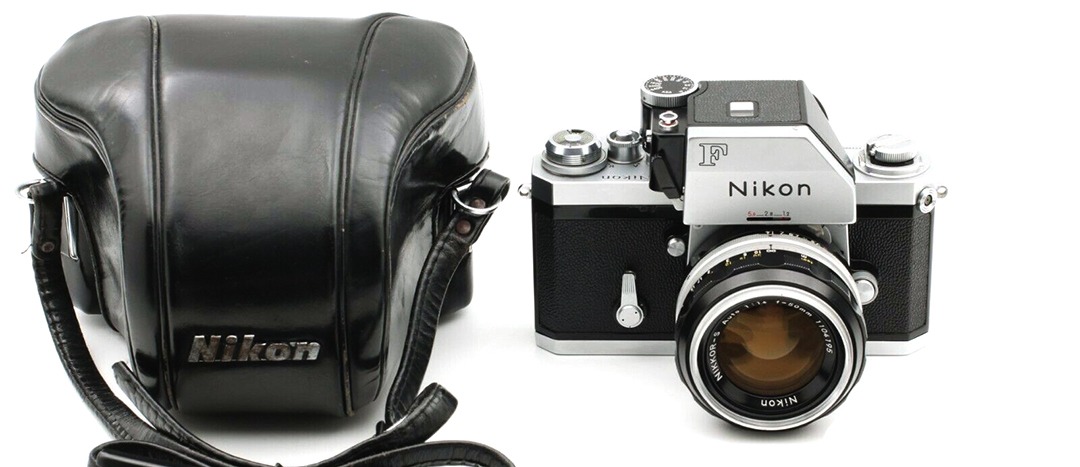
The End of a Legend
Well, OK, it wasn’t “the end” like you have to cry about it. The Nikon F was succeeded in 1972 by the Nikon F2 after a production total of 862,600 or so bodies were in circulation. Subsequent “single-digit” F cameras continued as the top of Nikon’s professional line of film SLRs, through the Nikon F6 introduced in 2004. Since the introduction of the digital Nikon D1 in 1999, Nikon has continued to reserve single-digit model numbers for top-of-the-line cameras.
For those interested in reading a really long dissertation on the history of the F, variations and accessories, Nikon, proudly it seems, has left their historical archives open to the general public. NIKON HISTORY
Nikon F Manual

